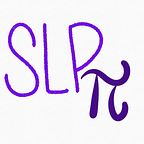Getting started:
I want to preface that I am a certified speech language pathologist through ASHA. I am not an expert in voice, but this is an outline of what I do with clients with vocal nodules.
Intake on knowledge of vocal hygiene and voice strategies/techniques. I began by asking some of the following questions to get an understanding of their knowledge, especially if they have had speech therapy before.
- Do you know why you are coming to see me?
- What are vocal nodules?
- Have you heard of vocal hygiene or things you can do to make your voice feel and sound better?
- What can you do to make your voice sound better?
- What did you work on with your previous speech language pathologist?
- What strategies have you used? What strategies do you like to use? What strategies do you think are helpful/not helpful?
- How do you feel about the sound of your voice?
- Does your voice feel better in the morning/afternoon/evening?
- What is one goal you want to achieve in speech therapy?
Inform: I think it is important for clients to understand the purpose of what we are doing in speech therapy. I take the answers from the above questions and make a list of the information I want to give to my client.
Vocal Hygiene: In my experience, the most challenging part of vocal hygiene is buy in from the client and for clients to be honest about their vocal hygiene outside of therapy.
- I make a calendar with my client that allows them to track their use of good vocal hygiene based on goals and needs. I stress that I want them to be honest. That I understand that somedays they might not reach the goals we put in place and that is okay. The importance is tracking where they are right now.
- We decide on what to track. For example, water intake, vocal rest time, number of vocal abuse (i.e. yelling/screaming), feeling of voice on 1–5 scale, and sound of voice on 1–5 scale.
- We set attainable goals monthly and check-ins with me weekly during our speech therapy sessions. I wanted them to track this data daily, but we agree an attainable goal such as, 20 out of 31 days for the first month and plan to increase as time goes on.
- We put in place an incentive for competing tracking and an incentive for meeting goals. Incentives will vary for client to client.
- Decibel Meter: I also have my clients download a free decibel meter app if possible, onto their phone. During sessions, we use the app on my device and place it on the table so they can monitor volume level. Then I talk to the client and their parents about choosing times to use the decibel meter for practice at home.
Identify vocal abuses: After informing about good vocal hygiene and about voice therapy. We list ways that they are abusing their voice in their daily life.
Strategies to target:
- Resonant Voice
- Confidential Voice
- Vocal Function Exercises
- Breathing Exercises
Tracking progress:
- Completion of Vocal Hygiene Calendar
- Meeting Vocal Hygiene Calendar Goals
- S/Z ratio
- Maximum phonation time
- Demonstration of taught vocal strategies
Resources:
*American Speech-Language-Hearing Association
*Fellow speech language pathologist: Never underestimate the knowledge of other speech language pathologists. When I have a case that is new or unusual, I have a group of speech language pathologists that I will reach out to. This group includes SLPs from my school district, graduate school friends, and SLPs I have met at professional development courses.
*Medical SLP Collective: This is a paid subscription. It is videos of strategies and courses you can take for more information of voice disorders. I think the subscription is definitely worth is for medial based speech language pathologists. I am not sure I would recommend for school based speech language pathologists.
*County Durham & Darlington NHS Foundation Trust YouTube Channel: Videos on vocal function and breathing exercises
